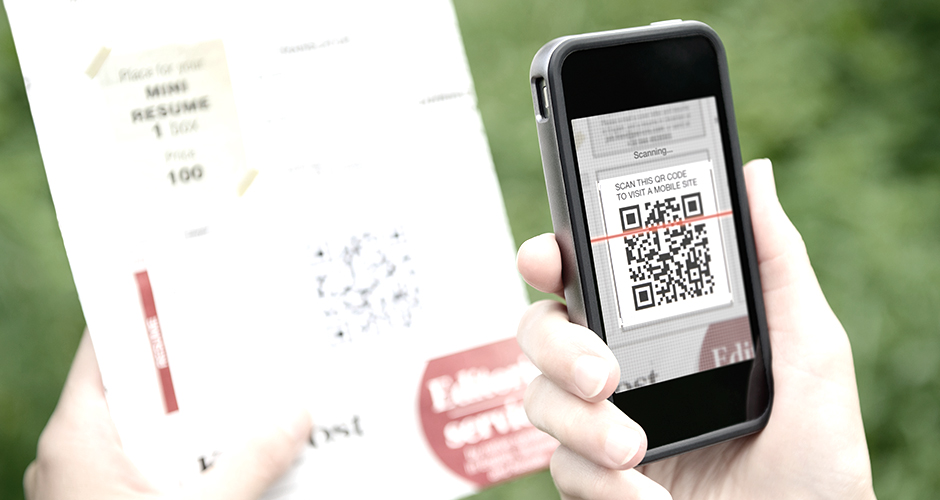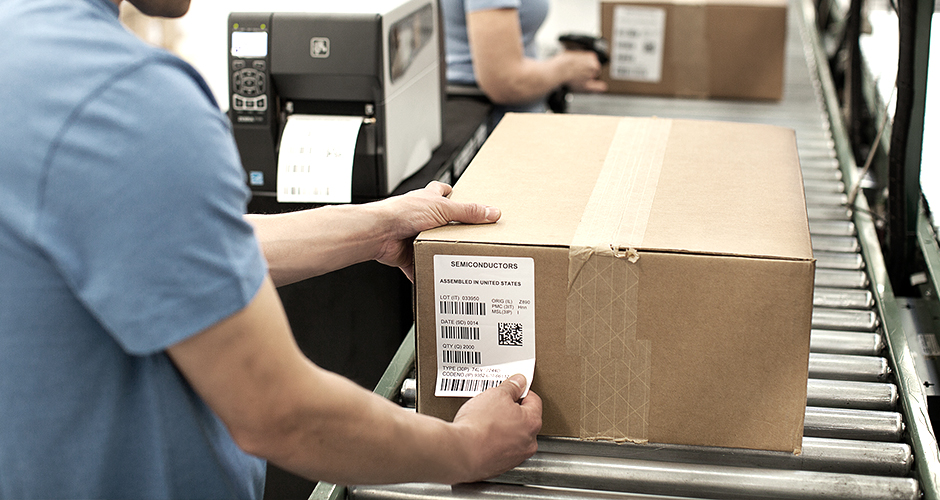Wasp Barcode Technologies: The Barcode Solution People
Spotify Shows How Businesses Can Better Use QR Codes
 Barcodes aren’t sexy. We all know that. But for decades, they didn’t have to be: They were used primarily by businesses to track the location, status, and price of their inventory and assets. But that’s changing, and we’re seeing companies like Spotify and Snapchat reimagine how barcodes can be used by businesses and customers alike.
Barcodes aren’t sexy. We all know that. But for decades, they didn’t have to be: They were used primarily by businesses to track the location, status, and price of their inventory and assets. But that’s changing, and we’re seeing companies like Spotify and Snapchat reimagine how barcodes can be used by businesses and customers alike.
The New, More Beautiful QR Code
Take Spotify, the Swedish music streaming giant that is battling the likes of Apple and Google for the ears of the people. They recently unveiled “Spotify Codes,” which are essentially audiowave-shaped barcodes. It’s a way for users to share links to songs, artists, albums, and playlists available on Spotify, without asking them to find and text or email or otherwise manually share a link.
Instead, users can use Spotify Codes the way they would a regular QR code: Take a picture and you’ll be directed to the page. Simple and effective, and most importantly, useful.
They’re also handy for bands and artists that want to share their music instantaneously with fans. They can post their Spotify Code on their website, or a flyer, and bring people to their Spotify page. The seemingly now-ancient adage of “Yeah, look us up on Spotify” can be replaced with “Scan this.” With how weird and complicated some band names and spellings can be, this could be a welcome relief.
 If this sounds like QR codes being repackaged in a sexier box, you’re mostly right. And don’t most people feel like QR codes were overhyped, and not as revolutionary as we once hoped? Absolutely. There are a few key differences between Spotify Codes and QR codes of the past, however.
If this sounds like QR codes being repackaged in a sexier box, you’re mostly right. And don’t most people feel like QR codes were overhyped, and not as revolutionary as we once hoped? Absolutely. There are a few key differences between Spotify Codes and QR codes of the past, however.
[Tweet "If this sounds like QR codes being repackaged in a sexier box, you’re mostly right."]
One is that Spotify is simply bigger, more fun, and more engaging than most websites or platforms that previously. It’s a big deal for an app like Spotify to adopt this technology. It shows that a potentially multi-billion dollar company can and should use barcodes to their advantage. In the past, you might have walked by a local coffee shop with a QR code in the window, which took you to their homepage or perhaps an offer for a deal. All respect to local coffee shops and their coffee, but there wasn’t enough value in scanning the code—even when giving a discount—to encourage repeat behavior.
But people share songs and playlists on Spotify and other streaming services all the time. This takes an existing behavior and reinforces it by making it easier than ever. It’s not trying to create a new behavior, and that’s key.
Another difference is that Spotify Codes don’t look like QR codes, which are a form of 2D barcode code typically in the shape of a square with a bunch of other squares inside of it. People associate QR codes with, well, nothing really. They don’t evoke much feeling. Spotify Codes, on the other hand, have a cool design that relates to their product—music and audio programs in general—that sticks in the mind.
[su_divider top="no" size="2"]
[su_divider top="no" size="2"]
Finally, Spotify Codes are mostly used by users to interact with each other, rather than with the business. Spotify here is just happy to be the platform on which the users interact. Most companies use QR codes to try to influence more interaction between them and the consumer, which people aren’t necessarily inclined to do.

Inventive Uses For QR Codes Are Everywhere
This is actually becoming a staple use of QR codes by other big social platforms. Spotify is hardly the first to use QR codes in this way, just the latest and arguably the most fun. For example, Snapchat has been using their own version of the QR code since 2015, with technology they inherited by buying startup Scan.me. These codes made it easier for people to add each other without typing in usernames or sharing URLs, which the app doesn’t do.
Snapchat also made it easy for people and businesses to create and share their own Snapcodes, even customizing them with selfie GIFs. Now businesses can download a vector version for printing on posters and other merchandise, which is crucial for businesses that want to obtain new followers but aren’t able to share a URL (which, again, isn’t possible in that app).
This combines what we’ve seen works above—letting users use these “QR codes” to interact with each other rather than with the business—with the more traditional methods of giving people access to business accounts, which they may find more interesting on a platform like Snapchat than they did the traditional website route. It’s a win-win.
It’s become so popular that even Facebook, which is in the running for the most powerful and influential platform of the entire internet, copied that same technology for use in their own Messenger app. These uses for QR codes are becoming ubiquitous right under our noses.
By reimagining what a QR code can look like and accomplish, these companies have updated the 2D barcode for 2017 and beyond.
Can Other Businesses Follow Suit?
The question is, will businesses of all sizes take advantage of this new way to use QR codes? With how common tablets and mobile devices are becoming in the workplace, it’s not a stretch to imagine that employees could share crucial work information with one another—spreadsheets, schedules, tracking information on shipments, inventory levels, asset maintenance records, payroll, and much more—via scanning a barcode with their devices. Typically, barcodes have been B2C, and now they’re C2C. What about B2B, or B-within-B?
As traditional platforms, including behemoths such as email, prove themselves to be ill-suited for the fast-paced work environments of the future, it may behoove companies to invest in new file-and-information-sharing methods like this one. Gone are the days of emailing lengthy URLs, or waiting for updates within workplace management apps like Trello. Just scan, using a smartphone or mobile device or even wireless/Bluetooth barcode scanner, and watch the information become your own.
Don’t look now, but QR codes could be making a comeback as one of 2017’s under-the-radar retail trends.
There was a time when QR codes seemed like they had been overhyped. But over the last few years, they’ve been making a secret renaissance. They’re becoming an integral part of some of the biggest and most popular apps. Perhaps this is how they’ll truly be most useful— from person to person, rather than from company to the masses.




